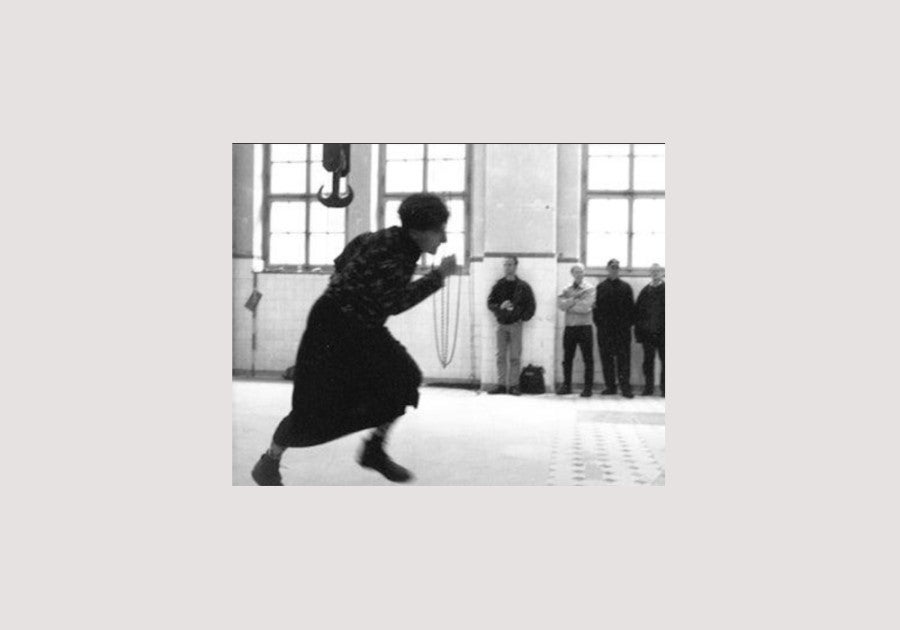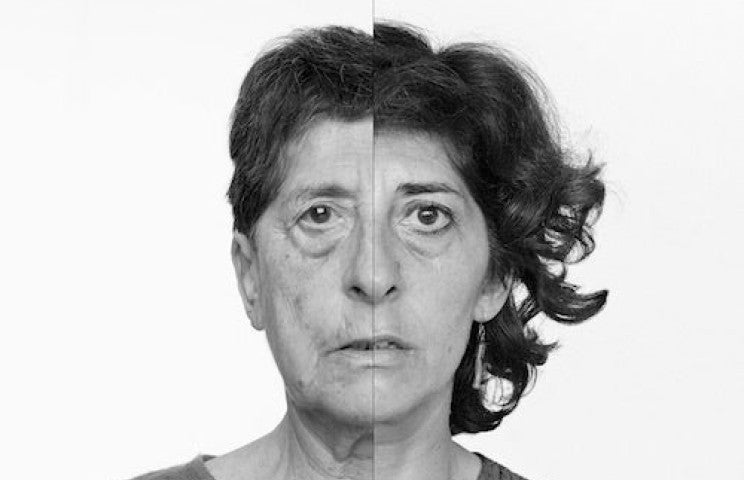Esther Ferrer

Born in 1937 in San Sebastian, Spain, and living in Paris since the 1970s, Esther Ferrer is internationally recognized for her performance practice, which takes the form not only of actions, but also of photographs, videos, sound works, poems and lectures. Since the 1970s she has been conducting a work-in-progress project of self-portraits. After studying journalism and social sciences, she carried out her first actions in the 1960s with the Spanish avant-garde group ZAJ, heir to Marcel Duchamp and John Cage, who invited them to the United States in 1973. Founded in 1964 by experimental musicians Walter Marchetti, Ramon Barce and Juan Hidalgo, it had an exceptional longevity for an avant-garde group (1964-1996). Favoring ephemeral forms, Ferrer was from the outset oriented towards an art-action rather than an art of production. From the 1970s, in parallel to her actions, which were for a long time the visible part of her work, she developed a wide and varied plastic work, revealed to the public at large at a later date: models, installations, objects, works based on prime numbers or the number pi. In France, it is the exhibitions at the Mac Val in Vitry and the Frac Bretagne in Rennes in 2014, the first retrospectives of the artist in France, that have allowed us to discover her vast body of work.
The artist, who did not study art, carried out her first actions with the Spanish group of experimental avant-garde musicians ZAJ, which she joined in 1967. Bizarre and subversive, their actions, inspired by John Cage, had a political meaning in the context of the dictatorship. John Cage invited them to the United States in 1973, where they exhibited in places at the cutting edge of art, such as The Kitchen. Integrating the international networks of the avant-gardes, ZAJ performs all over the world. Fluxus offered them to join them, but they chose independence, to be ZAJ – a word that means nothing, sounds like an interjection, a war cry. A fierce independence also characterizes Esther Ferrer, which comes from the experience of Franquism. The dictatorship, sharpening in those who opposed it, a sense of freedom and political awareness of the context, implied finding parallel ways to circumvent censorship, to do things, actions. For Ferrer, feminism, or political action, is a militancy of every moment, so she can say: my art is not feminist.
Action is the axis of Esther Ferrer’s practice: it is both a practice and a form. The artist develops a singular form-action that crosses performance, experimental music, conceptual art and is rooted in the avant-gardes of the 1960s, of which John Cage, whom the artist and her husband the musician Tom Johnson knew very well, is one of the key figures. Her performances, like most of her work, are simple, precise and direct.
Simplicity is a striking quality of Ferrer’s art. He hits but quietly. And with humor. The idea, often the first, triggers a work of form, which consists in purifying the idea to reach a right, striking form: the form of an act. Eliminating all theatricality, the artist concentrates on an action, often elementary: to draw a line while walking on an adhesive, to sit on a chair at a red light, to walk and speak at the same time, to make and repeat a tiny gesture even absurd, like throwing sugar at regular intervals, to put things on his head, to do nothing, to look at the public, to throw some change. Any gesture can become an act.
The title of one of the most famous actions, Faire le chemin en marchant, summarizes this form-action: an imperturbable force traces a path in a concrete reality, because real time is the proper of the action, and constructs a situation open to chance, to what happens, because « what can happen, is the most important ».
Let us finally say an essential trait of his actions, as of his self-portraits: a presence, which holds with the use of his body as medium or instrument; paradoxical presence, neutral and personal, precise and humorous, which evokes the burlesque body of a Buster Keaton: impavid, he follows his own necessity, his idea, towards and against the obstacles that are the social conventions or the normal functioning of things.
The action Intime et personnel, which dates from 1973, is a manifest work, emblematic of her art, now historic: the naked artist measures her body, concentrated on this action. It is the first time she performs naked. However, this work takes on a different meaning according to the versions and contexts: in 1973, it embodies the idea that ‘My body belongs to me’, while obviously exceeding this sole meaning; in 2013, when the artist performs it again at the age of 78, this action defies not only the taboo of the nudity of an aged body, but the even stronger taboo of female old age.
This living art integrates the action of time in very different ways: light, meditative, comic or neutral. His Self-portraits expose the transformation in time of a face, his own, as a raw fact: they send back to us the mirror of an elusive reality.
Esther Ferrer’s art, with its rigor and sense of the absurd, reminds us of the prime numbers with which she is currently working: they are divisible only by unity and by themselves, irreducible and unpredictable entities, they produce wonderful works.
Anne Bonnin
